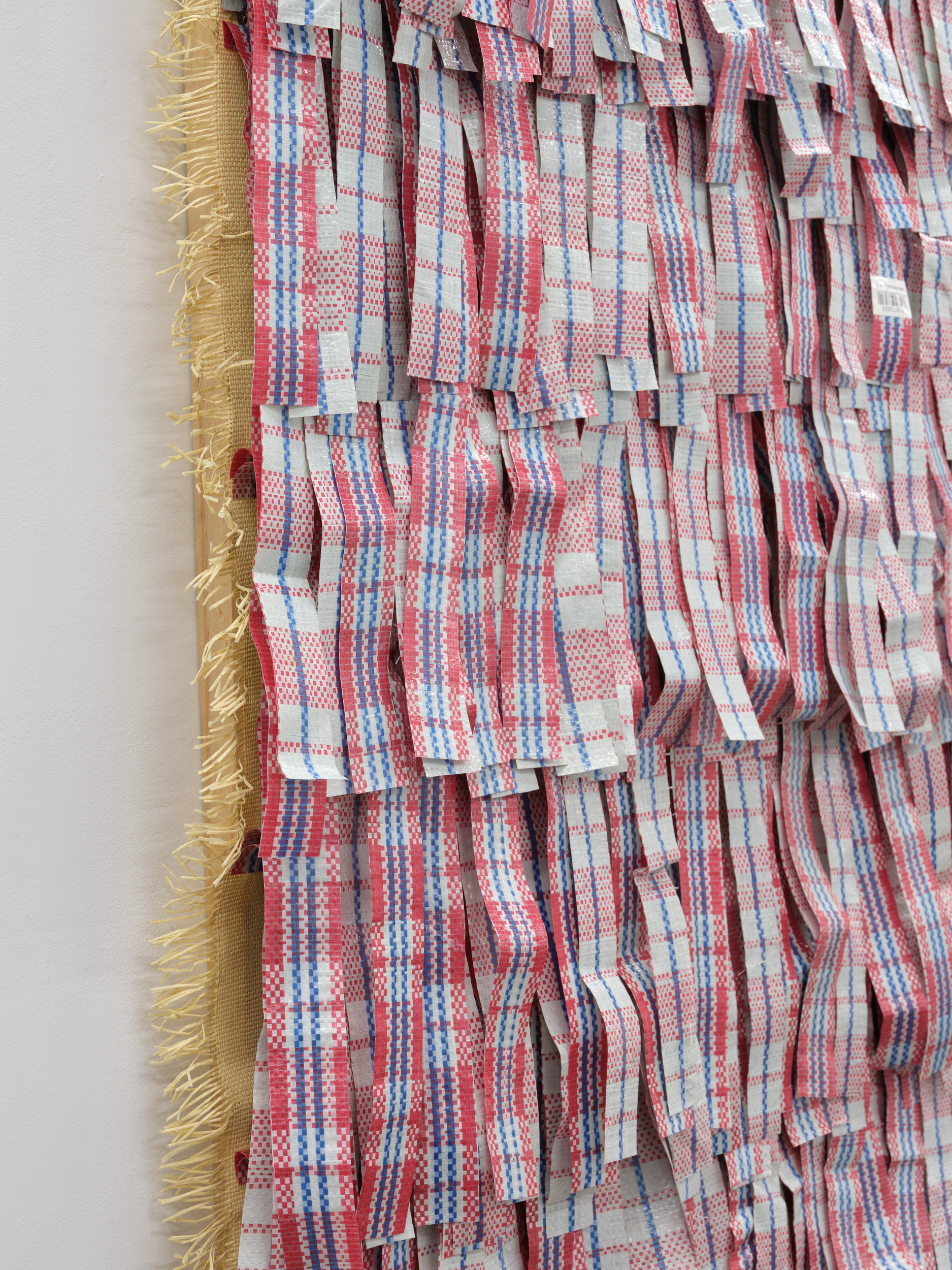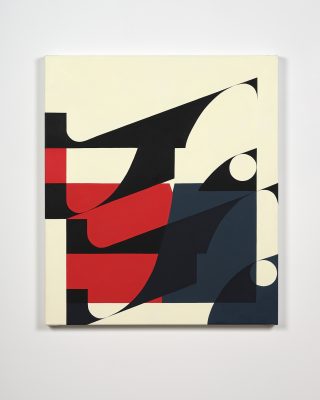In Samoasonite, early-career artist Jimmy Maʻiaʻi explores his Samoan/Palagi heritage and questions the term ‘Afakasi’ (‘half-caste’), often used to refer to a person of such heritage in a derogatory manner. The title of the show combines ‘Sāmoa’ with ‘Samsonite’, a luggage brand. Central to the presentation is a kind of mass-produced woven plastic bag that is sometimes pejoratively called the ‘Samoan suitcase’, due to its popularity among Samoan travellers.
Maʻiaʻi has cut the tartan-like fabric of the bags into strips, backing these with plastic versions of fine mats customarily made of natural fibre, and attaching them to timber frames to produce two monumental wall hangings, Samoasonite 2.0 and Samoasonite 2.1. The works echo the plastic thatching of a structure based on a traditional fale at Rosebank School in Avondale, suggesting experiences of cultural dislocation and transformation.

Jimmy Maʻiaʻi, Samoasonite (installation view), Visions, Tāmaki Makaurau, 2020. Photograph by Samuel Hartnett, courtesy of the artist.
The bags and mats that compose the hangings are materially in sympathy, since both are woven and of plastic, but they also contrast one another, the mats being an extension or imitation of a traditional item, the bags being introduced and culturally non-specific (indeed, they are popular across the globe as inexpensive luggage). The homogenous nature of the mats tends to emphasise the variegated nature of the bags, while the bags emphasise the many strands that make up the mats.
The dominance of plastic in the hangings inevitably suggests the ecological problem of plastics flooding into the world’s oceans. Moreover, it raises questions of cultural authenticity and resilience. On the one hand, plastic is associated with imitation and fakeness, and calls to mind the notion of being a ‘plastic Samoan’—that is, a Samoan person inadequately familiar with their language and culture. On the other hand, plastic is durable and highly useful.

Jimmy Maʻiaʻi, Samoasonite 2.1 (detail), 2020. Photograph by Samuel Hartnett, courtesy of the artist.
A further shade of meaning is presented by the place of origin of the bags. As stickers on the strips attest, they were made in China. They thus reflect the phenomenon of globalisation, which has long seen people travel out from Sāmoa in search of long-term and seasonal employment. At the same time, Chinese people have been present in, and have contributed to the cultural landscape of, Sāmoa for many decades.
Ultimately, Samoasonite serves to create sensations and carry memories. The hangings glisten and rustle as bodies pass them. During the making process, Maʻiaʻi was reminded of the natural world of Sāmoa, especially the waterfall Togitogiga and the lava field Saleaula. He thought, too, of his grandfather, Papaāliʻi Dr Semisi Maʻiaʻi, who worked as a doctor and promoted the Samoan language through scholarly work. Dr Maʻiaʻi imbued his grandson with a strong sense of connection to Sāmoa, a connection that is itself textured, multiple, and enduring.
Samoasonite
Jimmy Maʻiaʻi
8 December 2020 to 5 February 2021
Visions
Tāmaki Makaurau Auckland




